Following the road along Cua Dai beach (Hoi An, Quang Nam), I entered a small hamlet in Thinh My block, Cam An ward. The wind blew in gusts, carrying the salty taste of the sea. The sound of bamboo clacking was heard repeatedly. In a small yard filled with sunlight, bamboo stumps were piled up and scattered on the ground. A slim middle-aged man was diligently sawing and carving dry wood stumps. Dust particles clung to his cheeks. His forehead was covered with sweat, and drops of water rolled down and fell onto his nimble hands. He was sometimes pensive, concentrating, sometimes laughing as if an idea had just come to him. The smile revealing his missing teeth has become an unmistakable trademark in Hoi An.
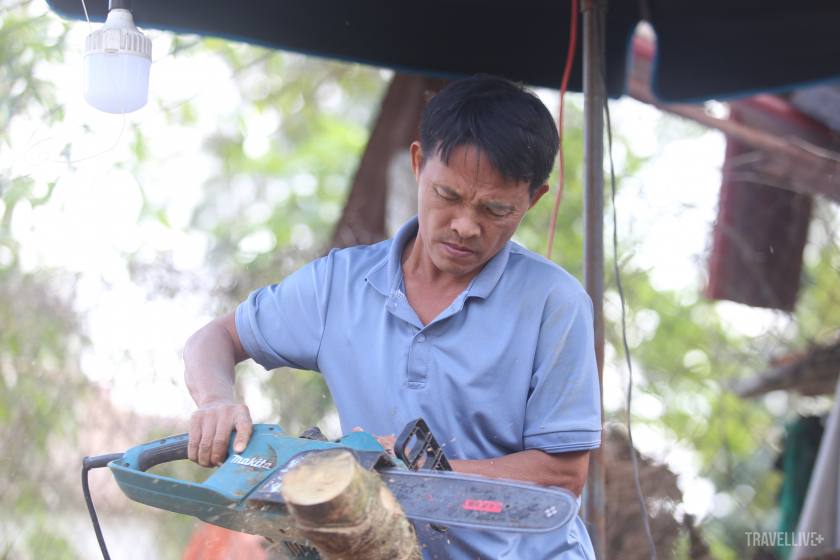
The artisan saws off the excess parts of the bamboo root in preparation for crafting.
He is Huynh Phuong Do (50 years old), the father of Hoi An bamboo sculpture art. For that reason, the name Crazy Red or Red Bamboo has been associated with him for the past 20 years. During that time, the artist has revived rough bamboo roots into vibrant works of art day after day. "My work is the same every day. But I don't feel bored. People can easily get excited about new things, but to maintain joy with old things requires patience," said Mr. Do.
The ups and downs of the years have 'sculpted' Red Bamboo
At the workshop in front of his house, Mr. Do's eyes filled with tears as he recalled a day in 1999. The small coastal hamlet was writhing in a historic flood. The wind howled in gusts. The water flowed rapidly. In the swirling water littered with firewood and rubbish, he saw a "strange" bamboo bush. Curious, Mr. Do scooped up the bamboo bush, chopped off the root, and carved it with his hands free while waiting for the water to recede. From that time of carving, he thought: "Oh, it turns out that bamboo roots can also be carved." The first bamboo root sculpture in Hoi An was born like that. That was also the fate that brought him to this art form until now.
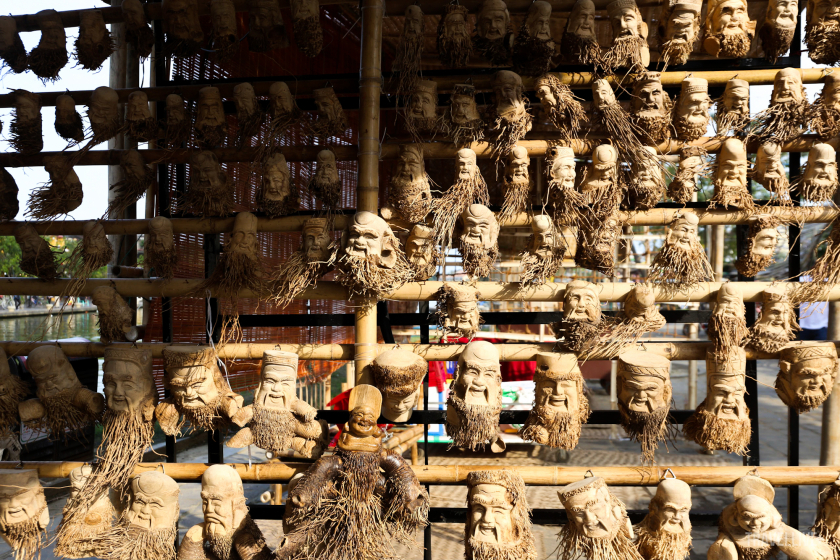
The themes of the works of artist Huynh Phuong Do are mainly spiritual and legendary characters.
However, everything did not come to Mr. Do randomly but was a long process that accompanied his wood carving art since his teenage years. Mr. Do said that at the age of 16, his parents took him to learn the craft in Kim Bong carpentry village. Having a talent for handicrafts, and with the teacher's dedicated guidance, Mr. Do quickly mastered it. After 3 years of studying, he went to work for wood carving establishments. However, life was difficult, the work was not enough to support himself, Mr. Do quit his job, switched to making banh chung and cycling around the alleys of Hoi An to sell for money. Now looking back at those ups and downs, the Quang Nam artisan still feels nostalgic: "If I had not gone through that period, there would probably not be Do Tre now", then his eyes sparkled with joy when looking at the new works that had filled the basket to prepare to be displayed. Up to now, it is impossible to count how many bamboo stumps that were thought to be discarded firewood have been "revived" thanks to the hands of the 50-year-old artisan.
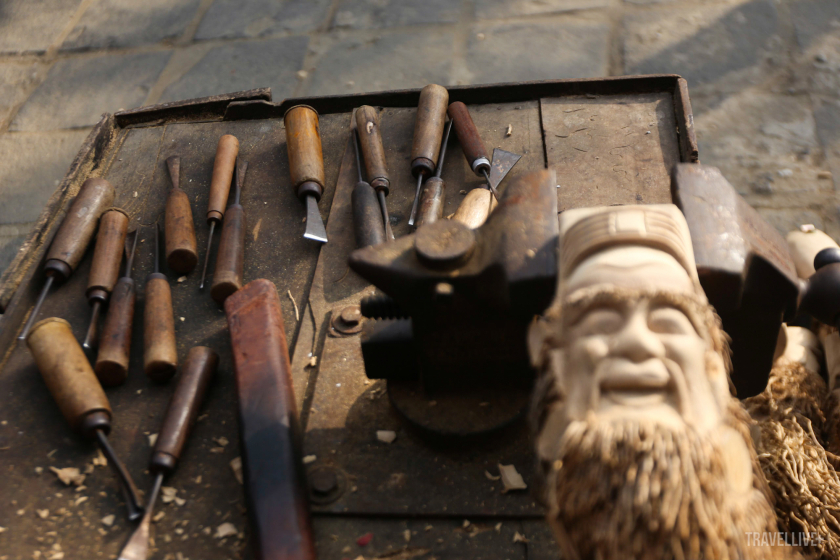
Sculpting tools set of artist Huynh Phuong Do.
To create statues of historical, spiritual, legendary figures of Vietnam and the world, in addition to sculpting skills, the artisan must also research and read countless pages of books, newspapers, and documents about history and culture. Mr. Do's works depict different facial expressions, symbolizing the joys, anger, love, and hate of life. Each sculpture is unique, because no bamboo root is the same as another. Not to mention, the works are created entirely by hand, and convey the soul of the artist, so they are never repeated.
Bamboo root journey through deep forest to become a work of art
At the product display booth by the Hoai River in Hoi An ancient town, Mr. Do put his works on the table without stopping, generously saying: "This 85-year-old bamboo root had to travel a very long journey of up to a thousand kilometers, from the deep forest of Son La, then transferred at several bus stations to reach Hoi An. For these old, rare bamboo roots, I had to personally go to the Northwest to find them. It was very difficult, no joke."
Mr. Do often buys younger bamboo roots in Quang Nam and neighboring provinces. "I wander around the villages, whenever I see bamboo bushes that have been cut down and have roots lying around, I collect them and pay 15,000 to 20,000 VND per root. I recycle natural waste and create valuable handicrafts," Mr. Do said. Bamboo roots also need to be picked in the right season to ensure quality.
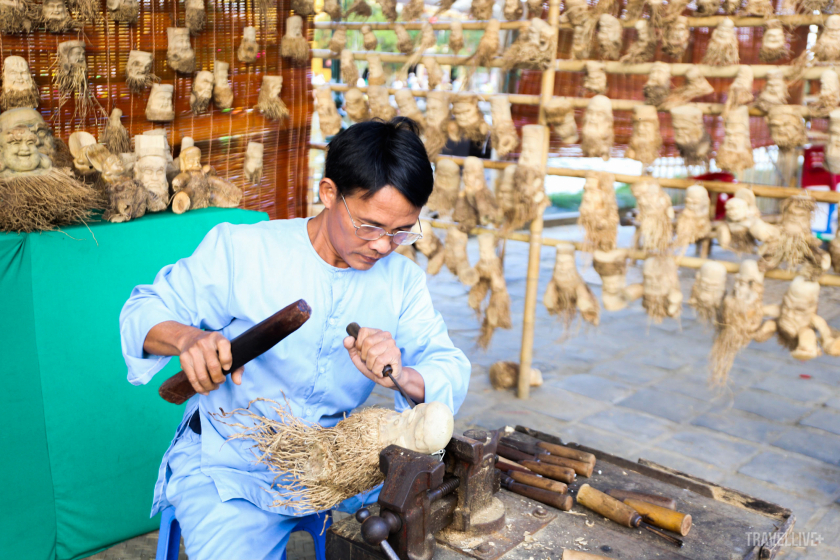
Artisan Huynh Phuong Do wishes to form a bamboo carving village in Hoi An.
Purchasing bamboo roots is difficult, the journey to create the work requires even more effort. The raw materials are preserved against termites and damage by soaking them in mud for 9 months, then taken out and dried in the sun for 10 days, before being cleaned thoroughly. In the workshop, Mr. Do's first-year student daughter, when not busy with school, helps her father use a hose to spray away the mud stuck on the bamboo roots.
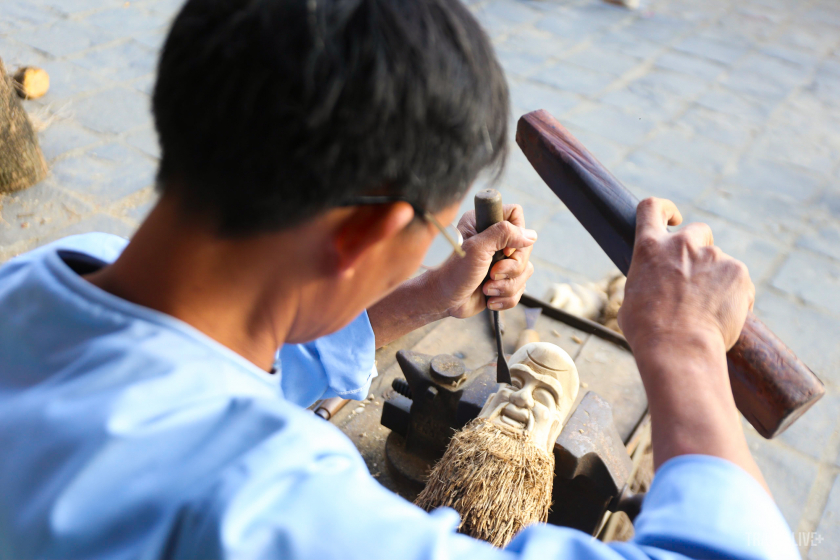
After cleaning the raw bamboo root, Mr. Do sawed off the excess details before choosing to shape it. This step seemed to be the simplest. But no, Mr. Do had to look at it long enough and observe carefully enough to choose the root that matched the intended purpose of the work. "The shape of the bamboo and the thickness of the root need to match the character. For example, a bamboo root with many roots will be chosen to be shaped into characters like Phuc, Loc, Tho or Truong Tam Phong...", Mr. Do said.
After choosing the bamboo root that matches the idea, artisan Huynh Phuong Do fixes the material with an iron stand and then opens the tool kit including hammers and knives of different sizes for different purposes. The large awl shapes the face, the small awl is used to go into the details that require sophistication and precision. The clicking sound is heard, sometimes loud, sometimes soft. The impact force is sometimes strong, sometimes light. The large awl and the small awl take turns smoothly. The skillful, continuous coordination is to avoid the case of the bamboo root breaking or the carving lines lacking flexibility. According to Mr. Do, the eyes are the most difficult detail because this is the deciding factor in whether the sculpture resembles the character or not.

Depending on the work, the artist will choose a bamboo root with a suitable shape.
In 30 minutes, the bamboo pieces were constantly being scraped under the awl, and the character's face gradually appeared. While working, his eyes were observing attentively, sometimes he squinted to reveal wrinkles on his forehead, sometimes he suddenly laughed: "The happiest feeling is when the character's face is formed". After shaping, the statues will be smoothed to become finished products. On average, it takes the artisan about 3 hours to turn the rustic bamboo roots into such works.
Often exposed to the sound of chainsaws, Mr. Do does not feel uncomfortable. He confided: "That is the sound of life, of busyness. Remembering the days of the epidemic, the sound of chainsaws and chisels gradually decreased, I also felt sad." In addition, using iron and sharp objects is potentially dangerous, so artisans must always be careful.
"A job not only brings value to society but also has to support the person doing the job. I always think, if my students cannot make ends meet with this job and leave to do other jobs, it is my failure", artisan Do Tre worries. Therefore, those who follow Mr. Do to learn the profession after mastering it are all given jobs with stable income by him.
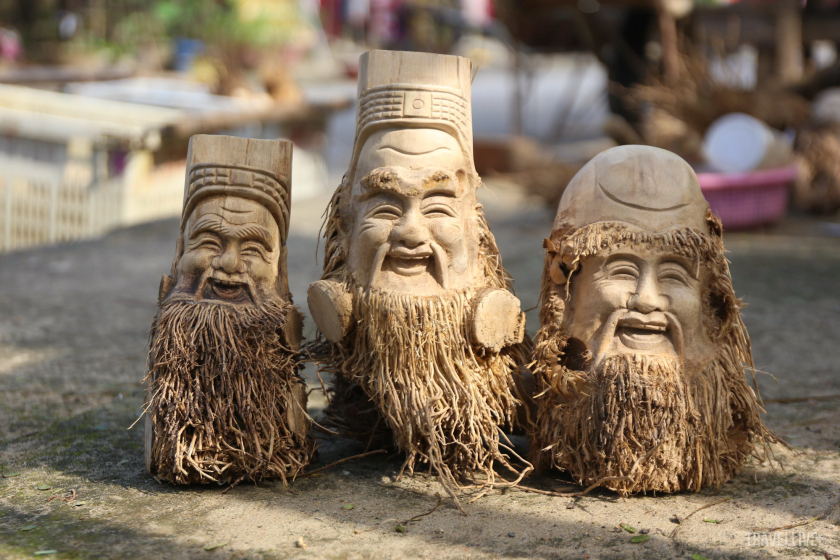
The work "Phuc - Loc - Tho" is made from bamboo roots.
How to spread local handicrafts to tourists, so that the creativity of Hoi An people is known to many people is what Do Tre is always concerned about. In the near future, he will organize workshops on bamboo carving, both to display and create space for tourists to experience this art. In the future, the Hoi An artisan wants to pass on the profession to many people, to build a bamboo carving village, contributing to increasing income for local people.

Tourists enjoy Hoi An bamboo sculptures.
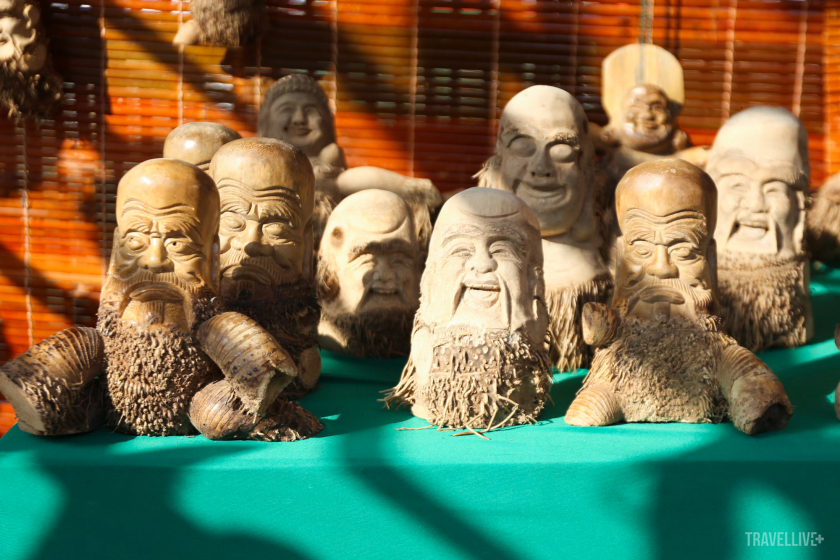
Spiritual characters expressed through bamboo root sculptures.





























